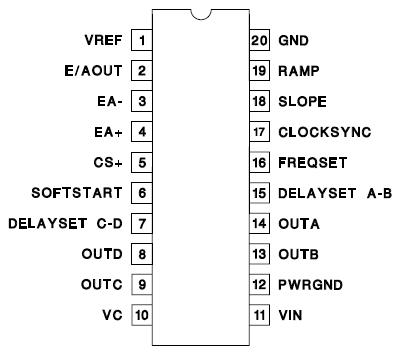UC1875: Features: • Zero to 100% Duty Cycle Control• Programmable Output Turn-On Delay• Compatible with Voltage or Current Mode Topologies• Practical Operation at Switching Frequenci...
floor Price/Ceiling Price
- Part Number:
- UC1875
- Supply Ability:
- 5000
Price Break
- Qty
- 1~5000
- Unit Price
- Negotiable
- Processing time
- 15 Days
SeekIC Buyer Protection PLUS - newly updated for 2013!
- Escrow Protection.
- Guaranteed refunds.
- Secure payments.
- Learn more >>
Month Sales
268 Transactions
Payment Methods
All payment methods are secure and covered by SeekIC Buyer Protection PLUS.

 UC1875 Data Sheet
UC1875 Data Sheet







